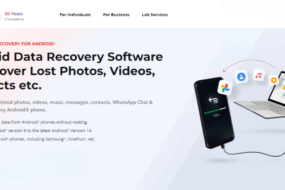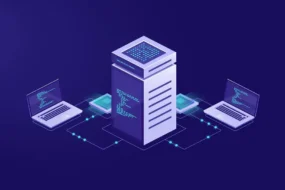Captioning technology has come a long way in recent years. There are now a variety of different captioning options to choose from, each with its advantages and disadvantages.
In this article, we will discuss the various types of captioning technology and how they can be used to improve your business’ communication strategy.
What Is Captioning?

Captioning is the process of converting spoken words into text. This text is then displayed on a screen, typically at the bottom of the screen. Captioning is most commonly used in television and movies, but it can also be used in live events such as conferences, lectures, and sports games. There are two main types of captioning: open and closed.
Open captioning is visible to everyone, regardless of whether they have the sound turned on. Closed captioning, on the other hand, requires the viewer to activate the captions manually.
In addition to providing a way for deaf and hard-of-hearing individuals to follow along with audio-based media, captioning can also be useful for viewers who are trying to watch TV in a noisy environment or viewing a foreign language film without subtitles.
Types of Captioning

There are several different types of captioning, each with its strengths and weaknesses. One popular type of captioning is closed captioning, which allows viewers to read the dialog and sound effects as they occur on the screen.
Closed captioning is often used for educational or foreign-language films, as it can provide a complete transcript of the movie. Another type of captioning is open captioning, which displays the captions directly on the screen.
Open captioning is ideal for noisy environments, such as bars or sporting events, where it can be difficult to hear the audio. Finally, there is interactive captioning, which allows viewers to control the timing and placement of the captions.
Real-time captioning is a type of interactive captioning that is often used in live events, such as conferences or lectures. This type of captioning can be very beneficial for viewers, as it allows them to control the speed of the captions and pause the video if they need to.
What Is the Technology Used for Captioning?

The most common technology used for captioning is Automatic Speech Recognition ASR. ASR systems work by converting spoken words into text, which can then be displayed on the screen. There are a variety of ASR systems available on the market, each with its strengths and weaknesses.
However, all ASR systems share one major limitation: they are only as accurate as the audio they are given to work with. If the audio is of poor quality, the captions will likely be inaccurate as well.
Another popular option for captioning is manual captioning, in which a human transcriber types out the dialog in real-time. This method is more accurate than ASR but also requires more manpower and is thus more expensive. For these reasons, most captioning is still done using ASR technology.
What Are the Benefits of the Technology?

Captioning technology provides several benefits for both organizations and individuals. Perhaps most importantly, captioning can improve communication and make information more accessible. This is especially important for those who are hard of hearing or deaf, as well as for speakers of other languages.
In addition, captioning can help to improve concentration and focus, reduce noise levels, and provide a written record of spoken information. For organizations, captioning can also help to create a more inclusive environment and improve customer satisfaction. Ultimately, captioning technology provides some potential benefits that make it an important tool for businesses and individuals alike.
How to Choose Automatic Captioning Software?

When choosing automatic captioning software, it is important to consider the accuracy of the system, the price, and the features offered. Some systems offer real-time captioning, while others provide a transcript of the audio after the fact.
Some systems are designed for specific purposes, such as live events or foreign-language films, while others can be used for any type of audio. It is also important to consider the compatibility of the software testing with your existing equipment and software.
Do Captions Help Marketing?

Most businesses use some form of digital marketing to promote their products or services. Captions are one tool that can be used to help marketing efforts. By including captions with images, businesses can provide additional information about their products or services.
This can help to explain what the product is and why it is useful, making it more likely that customers will want to purchase it.
In addition, captions can be used to highlight special offers or promotions. Including a caption with an image can help to grab attention and generate interest in a product or service. As a result, captions can be a valuable tool for businesses looking to boost their marketing efforts.
Discover more:










